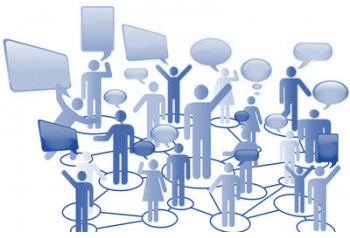When customers call, they inevitably want answers or resolution, and they want it quickly and easily; agents want to give it to them too! You and your customers’ goals align:
- Reduce hold time and handle time
- Achieve first contact resolution (FCR – more simply, “closure” to them)
- Provide/get a speedy response that everyone can be confident in
Companies try to keep their agents current on the latest developments by sending email updates on a regular basis. Unfortunately, agents generally don’t have time to read them, let alone absorb and remember the details. So, they each cobble together some sort of system to help them refer back to their library of mail. Or they simply throw up their hands and rely on their own resourcefulness to get the job done.
Despite all these great intentions, responses come slowly as agents search for information and answers. They may consult a bunch of resources, sometimes pinging multiple people sequentially (and the clock is ticking…). They instant message, call, even go “walkabout” to track someone down. When they fail, they may resort to the dreaded, “someone will call you back.” Or they may go with a “best guess” that may or may not be accurate and is likely inconsistent with other agents’ best guesses.
It’s bad enough when these issues are contained within the center, but it’s even worse when the center relies on groups or individuals in other departments. They may convey a “don’t bug me” attitude and avoid real-time communication. If the center must use email to hand off inquiries, they quickly lose tracking and insight into follow up and closure.
 There never really seem to be silver bullets to common problems. But most centers we visit these days already have multiple instant messaging and collaboration tools. They may be available through corporate initiatives or center-focused technology. They may even come accidentally, as part of another solution.
There never really seem to be silver bullets to common problems. But most centers we visit these days already have multiple instant messaging and collaboration tools. They may be available through corporate initiatives or center-focused technology. They may even come accidentally, as part of another solution.
At their most basic, collaboration tools show “presence” (status and availability) and allow people to Instant Message (IM, aka chat) with each other or a group. Some tools integrate presence with the work state in the ACD. They may also include features such as screen-sharing, file-sharing, co-editing, conferencing (voice, desktop, and video). And they may integrate with a variety of other tools, such as shared calendars, workflows, and click to call or chat.
Here are examples of where we see them – and where you might go looking for your opportunities:
Part of the desktop suite: The most common option in this category is of course Microsoft Office. The collaboration tool has evolved from Skype for Business to Teams, which has features in line with the most robust collaboration tools, perhaps driven by competition from some of the point solutions such as SLACK (more on that in a second). Google’s G Suite offers similar capabilities.
CRM: Tools like Salesforce, SAP, Oracle, Zendesk, Microsoft Dynamics, Sugar, Zoho and more may have chat (IM) capabilities (or integrations), at a minimum. It may be an inherent part of the tool or an add-on/option.
PBX/ACD/UC: Most vendors, whether premise or cloud, offer a messaging tool with their licenses. Think Avaya, Cisco, 8×8, RingCentral, etc. It is typically a Unified Communications feature, and therefore more likely to be used enterprise-wide, but can be Contact Center only as well. CC Software may also have an internal chat that is just like what is used for customers chatting on the website.
SLACK: I call this one out specifically because I view it as transformative – both for users, and for the market. Part of its differentiation was “persistent” conversations – ones that didn’t go away when the conversation ended and someone closed the window. Users can create workspaces on various topics, with invited members, inside or outside the organization. The conversation history becomes even more valuable as it is searchable, can be organized into topics, and can have a variety of other resources associated with it (e.g., web links, documents, notes).
While you won’t turn all your agents into superheroes, the proper use of these desktop tools – which you probably have, or could have, for little or no cost – can enhance efficiency and effectiveness to the benefit of all. You can watch your customer experience soar while your agents gain confidence and knowledge. The revamped processes will improve your bottom line, as well as a variety of metrics that reflect your customer experience and the inner-workings of your center and enterprise.
